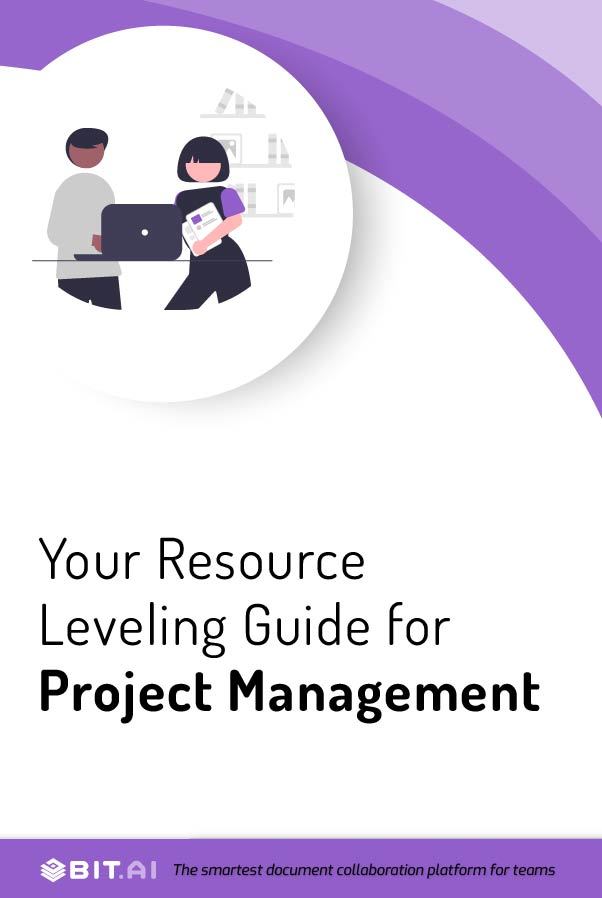The thing about running and managing projects is that, no matter how much you plan, something can go wrong somewhere along the course of the project’s lifetime.
It could be a lack of time, shortage of tools and equipment, defect in machinery, burnout among employees, or a combination of all. As a project manager, your main task is to ensure that your project deliverable doesn’t get affected in any way.
So how do you do this? Resource leveling is the answer.
Resource leveling is a technique that lets you modify timelines so that projects can be completed with your available resources. It helps ensures that you can achieve your goals and objectives by managing and controlling the project and satisfying expectations.
Now, if you’re scratching your head and wondering what resource leveling is, then you have come to the right place to learn about it!
In this blog, we will look at what resource leveling is, why it is important, and some of the best techniques and practices you can follow!
Are you ready? Let’s get started!
What Exactly is Resource Leveling? (Definition)
Resource Leveling is a project management technique that identifies and estimates when a project can be finished with the available resources. This is done so that a timeline can be established. Once a proper time frame is worked out, it can be adjusted to suit or adapt to the resources available.
Usually, the resource leveling technique is used when there is a scarcity or shortage of resources. This can be in the form of unavailability of a resource for a certain period, when demand exceeds supply, or when resources are required to be shared between teams.
Resource leveling recognizes that resources are limited and therefore creates adjustments to maintain a balance of resource demand and supply available. It aims to distribute work between resources evenly and fairly to increase project efficiency.
For example, if an employee is often working around the clock and is tasked with handling more than one project at a time, it can lead to work overload and overburden.
Resource leveling will plan and adjust work allocations and reschedule tasks so that the employee can carry out the tasks on different days and according to their needs.
In short, resource leveling is all about making the most out of the available resources while working within the project’s time, cost, and scope constraints. It contributes to a healthy work environment and ensures that the project schedules are realistic and achievable.
Now that you have learned a little about resource leveling, let’s look at why it is important in project management.

Why is Resource Leveling Important in Project Management?
1. Improved Management
By managing the timeline of different projects following the ability and capacity of employees, resource leveling ensures that all projects run smoothly without deterrence or setbacks. This allows managers to focus on high-priority projects without neglecting other projects.
2. Prevents Task Overloading
Quite often employees are overburdened with their workload, leading them to overwork and work overtime. With proper resource leveling, you can solve this by adjusting deadlines and resolving the overallocation of work tasks, and ensuring that employees don’t have too much on their plates.
Read More: Workload Management: Definition, Importance, Process & Tools!
3. Enhanced Productivity
Resource leveling aims to prevent employee burnout. Even the most skilled worker who can work under pressure has certain limitations which must never be crossed. The technique of resource leveling ensures not only a healthy work environment but aids in the enhanced productivity of employees.
4. Reduced Costs
Resource leveling techniques help minimize a considerable number of project delays. This helps reduce the losses that can potentially occur in costs and labor. It lets you manage the demand for resources without crossing the company’s capacity and financial resources.
5. Ensuring Quality
Perhaps the best outcome of implementing resource leveling is that it ensures great quality. A well-thought-out plan results in smooth execution. With efficient employees being utilized to the best of their capacities by focusing on a single task most productively, the result of projects is often high quality.
All-in-all, resource leveling is implemented with the motive of maintaining a healthy equilibrium required for the smooth functioning of an organization. It seeks to avoid employee burnout, boost productivity, prevent overutilization of resources available, and ensure quality.
Now that you know the benefits of resource leveling, let’s go over some of the best resource leveling practices and techniques.

Best Resource Leveling Practices and Techniques
1. Critical Path Analysis
Critical path analysis is a resource leveling technique that lists out all the activities required to complete a task, the duration it will take to complete it, and the relationship between the activities. It mainly involves estimating when a project will start and when it will end.
In this technique, project managers assess and analyze the time needed to finish each task without taking into consideration resource availability. It then estimates the resources needed and then evaluate the gap between demand and capacity.
This will help managers identify the resource constraints and help them re-assess the start and finish dates of the tasks.
If the timeline or dates of the project is not a constraint, then it can be altered to fit the allocated resources, but if the deadline or timeline can’t be altered, then more resources can be used to ensure that the tasks are completed on time.
2. Pure Resources Leveling Technique
This is a simple yet effective method of resource leveling because it balances resource availability with demand from the beginning of a project. It simply aims to maintain resource and demand equilibrium.
This technique prevents an organization from excess allocation of resources, as well as insufficient allocation of resources.
The pure resources leveling technique is often used when the resources are in demand, such as when they’re double-booked or available only for a specific time. It ensures that you avoid overallocation, keep the resources at a steady level, and distribute the right amount for project success.
3. The Critical Chain Technique
Often when a project starts and is in full swing, there will come a time in the duration of the process when resources come into conflict with tasks, or other words, become mismatched.
This is where the critical chain method comes into play. It is a resource leveling technique that alters and adjusts the project schedule to account for resource constraints. It defines tasks and activities, estimates task durations, and then calculates buffers.
This is different from the critical path method in the sense that factors in resource availability when it calculates project duration. It reduces uncertainty, prevents problems, and helps balance out the overall path.
So in the case an employee cannot finish his work or becomes unavailable, this technique will prevent any discrepancies that may arise.
 4. The Fast-Tracking Technique
4. The Fast-Tracking Technique
Fast-tracking is a resource leveling technique where multiple tasks and activities are executed simultaneously instead of delivering them consecutively. This often happens when you get clients with non-flexible or tight schedules and timelines and you need to deliver the project on time despite resource scarcity.
Tracking projects is what keeps the momentum going. When managers properly track ongoing projects, it prevents one project from overlapping another and ensures that all projects are pursued parallel to one another.
To implement the fast-tracking technique, you must first assess or analyze the tasks in the critical path to get an idea of which tasks can be fully or partially achieved without following the sequence.
Although this technique is used often, it may not work all the time, but it still offers a great deal of perspective.
5. The Crashing Technique
When the fast-tracking technique doesn’t work, you can implement the crashing technique. It is a resource leveling technique where you add more resources to accomplish the project tasks within the minimum time.
The critical path technique identifies the estimated start and end dates of a project but in reality, certain events can lead to changed timelines. In such cases, to meet the minimum time calculated, extra effort is added where needed.
Doing this leads to an increase in the cost of the overall project.
Crashing may also demand you to negotiate with stakeholders, as it might require you to leave out some features or add budgets to speed things up.
Conclusion:
Resource leveling is key for the successful execution of resources and the growth of any organization or enterprise.
We’ve covered the importance of resource leveling, the best practices, and the techniques to be followed and implemented.
Now depending on the needs of your business, you can choose the resource leveling technique or practice that will help you manage and control your project resources and accomplish your goals and objectives.
Good luck!
Further Reads:
What is Resource Allocation? Definition, Tips & More!
What is Project Planning: A Step by Step Guide!
Capacity Management: Definition, Importance & Process!
Project Budget Plan: What is it & How to Create it?
Resource Management Plan: What is it & How to Create it?
9 Risk Management Tools & Techniques You Must Try!
Work Breakdown Structure: Definition, Types, Importance & Process!


Related posts
Bit.ai | Watch to Learn More
What is Bit.ai?
Bit.ai is an innovative AI-driven knowledge and Document Managment suite designed to empower knowledge workers by streamlining the creation of, documents, wikis, and notes. With an intuitive interface and seamless integration, Bit.ai acts as a versatile assistant to help you collaborate, generate, organize, and visualize your ideas effortlessly. Whether you are drafting a report, managing a project, collaborating with your team or clients, or brainstorming new concepts, Bit.ai brings intelligence and creativity to every aspect of your work process.


